Table of Contents
A New Breed of Cartoon Chaos
In the early ‘90s, Nickelodeon revolutionized animation with The Ren and Stimpy Show, a bizarre, grotesque, and darkly humorous take on the classic cat-and-dog duo formula. While cartoons like Doug and Rugrats focused on relatable childhood experiences, this show embraced surrealism, slapstick violence, and grotesque visual humor that appealed to both kids and adults. Its animation style, reminiscent of classic Tex Avery and Bob Clampett cartoons, featured extreme facial expressions, exaggerated physicality, and grotesque close-ups that made every frame unpredictable. Creator John Kricfalusi sought to break conventional storytelling by using spontaneous and unfiltered humor, resulting in chaotic yet unforgettable episodes. With its mix of outrageous gags and experimental animation, it became one of the most influential cartoons of the decade.
Despite its success, Ren & Stimpy was notorious for controversy, frequently clashing with Nickelodeon executives over its content. The show’s dark humor, toilet jokes, and disturbing themes led to censorship battles, most notably with the banned episode Man’s Best Friend, which depicted Ren violently attacking a character with a wooden paddle. Production delays and behind-the-scenes disputes resulted in Kricfalusi being fired after two seasons, with Nickelodeon taking control and shifting creative direction. The later seasons, produced by Games Animation, were met with criticism for losing the show’s original chaotic edge. Still, its legacy endured, inspiring later cartoons like Beavis and Butt-Head, Cow and Chicken, and SpongeBob SquarePants, proving that animated series could push the boundaries of humor and artistic expression.
Meet Ren & Stimpy: A Match Made in Madness
At the heart of the show are its two unforgettable protagonists: Ren Höek, a scrawny, short-fused Chihuahua with a psychotic streak, and Stimpy, a dim-witted but cheerful Manx cat. Their relationship is defined by Ren’s uncontrollable rage and Stimpy’s oblivious optimism, creating a bizarre yet compelling chemistry. Unlike traditional animated duos such as Tom & Jerry, where physical comedy dominated, Ren & Stimpy introduced a darker, more psychological edge. Ren’s erratic temper often resulted in exaggerated, manic outbursts, while Stimpy’s innocent stupidity made him both a victim and an unintentional tormentor. The show’s humor thrived on their extreme personalities, turning mundane moments—such as sharing a bed or brushing teeth—into surreal, often disturbing, and hilarious situations.
Although Ren & Stimpy followed a loose narrative structure, the show constantly reinvented their roles, placing them in wildly different scenarios. One episode might cast them as space explorers, while another turned them into nature documentary hosts or Old West criminals. This unpredictability allowed for endless comedic setups, ranging from gross-out humor to absurdist satire. Stimpy, despite his childlike innocence, often indulged in disgusting habits, such as licking litter boxes or collecting his own belly button lint. Meanwhile, Ren’s unhinged nature sometimes verged on outright cruelty, as seen in episodes where he manipulated or terrorized his dimwitted companion. This extreme contrast between the two characters created one of the most unique and unfiltered comedic pairings in animation history.
Nickelodeon’s Black Sheep
As one of the original Nicktoons alongside Doug and Rugrats, Ren & Stimpy quickly became the network’s unruly outlier. While its counterparts focused on childhood innocence and heartwarming life lessons, this series thrived on grotesque imagery, absurd humor, and unapologetic chaos. Episodes often included exaggerated violence, from Ren’s wild outbursts to Stimpy’s painful misfortunes, making it a stark contrast to Nickelodeon’s family-friendly reputation. Adding to its rebellious nature, the show frequently spoofed 1950s-style commercials with disturbing fake ads, such as Log and Powdered Toast Man, which mocked consumer culture in the most absurd ways. These elements, combined with its unpredictable storytelling and grotesque character expressions, cemented the show as a subversive and boundary-pushing force in animation.
Despite its popularity, Ren & Stimpy faced frequent censorship battles with Nickelodeon’s Standards and Practices department, which often objected to the show’s crude humor and violent slapstick. Certain episodes were heavily edited or outright banned, most notably Man’s Best Friend, which featured Ren viciously attacking another character with a wooden paddle. The show’s creators constantly pushed the limits, leading to tensions with the network over delays and controversial content. Nickelodeon attempted to tone down the more extreme elements, but its unpredictable nature remained a key part of its appeal. While other Nicktoons followed structured storytelling and moral lessons, this show embraced unpredictability, discomfort, and anarchy, making it one of the most controversial yet iconic cartoons of its time.
The Art of the Absurd
The show’s animation style was as unique as its humor, embracing exaggerated distortions, surreal backgrounds, and unpredictable character expressions. Ren & Stimpy frequently showcased grotesque, hyper-detailed close-ups, where every wrinkle, boil, and droplet of sweat was amplified to unsettling extremes. This approach, reminiscent of classic animators like Tex Avery and Bob Clampett, pushed the limits of visual absurdity, making the show unpredictable and chaotic. Scenes would shift from smooth, fluid animation to jittery, erratic movements, emphasizing the unhinged nature of its characters. Backgrounds played a crucial role in setting the mood, often transitioning between beautifully painted landscapes and unsettling voids filled with ink blots, further reinforcing the show’s dreamlike and nightmarish atmosphere.
Unlike traditional cartoons that maintained consistent designs, Ren & Stimpy delighted in constantly warping its characters’ appearances to heighten comedic and emotional impact. Ren’s face could stretch into terrifyingly exaggerated snarls, while Stimpy’s expressions could shift from naive joy to grotesque obliviousness in an instant. The show’s animation team often used close-ups to amplify discomfort, whether it was a detailed view of a character’s unbrushed teeth or a disgustingly slimy surface. These extreme artistic choices, combined with slapstick humor and offbeat pacing, created a visual language that set the show apart. While some found its grotesque imagery unsettling, this absurdist approach became one of the show’s most defining and influential characteristics.
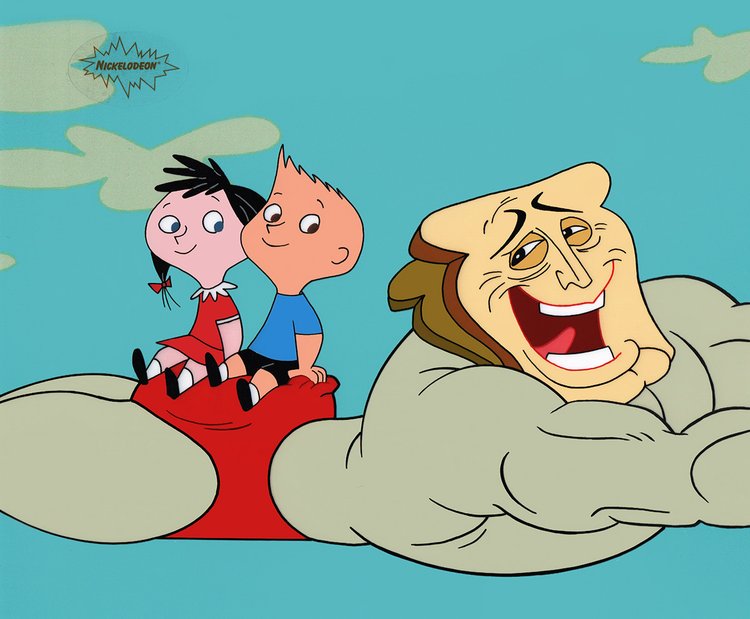
Music and Mayhem: The Sound of Ren & Stimpy
From the offbeat rockabilly opening theme Dog Pound Hop to the absurdly catchy Happy Happy Joy Joy, the show’s soundtrack was as unpredictable as its animation. Drawing inspiration from jazz, folk, classical, and vintage radio jingles, the music played a key role in heightening the show’s chaotic energy. Episodes frequently used library music from the 1940s and 1950s, which contrasted sharply with the bizarre visuals and dark humor, creating a surreal experience. Ren & Stimpy also embraced original compositions, with songs like The Royal Canadian Kilted Yaksmen Anthem and Don’t Whiz on the Electric Fence becoming instant cult classics. These unusual musical choices made the show feel timeless, while also adding an unsettling yet humorous backdrop to its absurd narratives.
Just as distinctive as the music was the show’s voice acting, which contributed to its erratic and unhinged atmosphere. Initially, John Kricfalusi voiced Ren with a raspy, exaggerated accent inspired by Peter Lorre, while Billy West provided Stimpy’s dopey, cheerful voice, modeled after classic cartoon characters like Larry Fine of The Three Stooges. After Kricfalusi’s departure, West took over Ren’s voice, adding even more manic energy to the character’s already unpredictable personality. The exaggerated vocal performances amplified the show’s comedic impact, whether through Ren’s psychotic rants or Stimpy’s childlike obliviousness.
Behind the Scenes: A Production Nightmare
The production of Ren & Stimpy was as unpredictable and chaotic as the show itself. John Kricfalusi, the show’s creator, was known for his perfectionism, which often resulted in missed deadlines and budget overruns. He frequently clashed with Nickelodeon executives, who struggled to rein in his unorthodox creative process. Kricfalusi insisted on personally approving every detail, from character expressions to story pacing, leading to prolonged production delays. The network’s frustration grew as the show’s controversial content triggered battles over censorship, particularly with episodes like Man’s Best Friend. These issues, combined with Spümcø’s inability to deliver episodes on time, ultimately led to Kricfalusi’s firing after the second season, marking a turning point in the show’s history.
Once Ren & Stimpy was handed over to Nickelodeon’s newly formed Games Animation studio, fans noticed an immediate shift in tone. Under new leadership, the series became more structured, but many felt it lacked the raw energy and rebellious spirit that had made it so groundbreaking. While voice actor Billy West continued to provide the voices of both Ren and Stimpy, the writing and animation style became tamer. Episodes relied more on predictable slapstick rather than the surreal, unpredictable humor of its earlier seasons. Despite lasting three more years, the show’s later episodes failed to capture the originality of its early run.
Banned, Censored, and Too Hot for TV
ew cartoons have faced as much censorship and controversy as Ren & Stimpy, which frequently pushed the boundaries of acceptable content for children’s television. While Nickelodeon was initially drawn to the show’s offbeat humor, its increasingly grotesque visuals, violent slapstick, and crude jokes often sparked internal debates over what could be aired. Scenes depicting exaggerated bodily functions, disturbing close-ups, and intense violence regularly tested the limits of Nickelodeon’s Standards and Practices department. The most infamous case was the episode Man’s Best Friend, where Ren violently attacks a character named George Liquor with a wooden paddle in an unsettlingly realistic sequence.
Despite these restrictions, Ren & Stimpy found ways to push its dark humor even further. While Nickelodeon cut or edited scenes involving excessive violence or suggestive themes, later episodes produced under Games Animation still maintained a degree of crude humor. However, the show’s true descent into explicit content came in 2003 with Ren & Stimpy Adult Party Cartoon, a reboot that removed all network-imposed limitations. This version featured shocking content, including overt sexual innuendos and even more graphic violence, alienating many fans of the original series. Although it attempted to embrace full creative freedom, the extreme nature of the reboot backfired, leading to widespread backlash and cancellation after only three episodes aired.
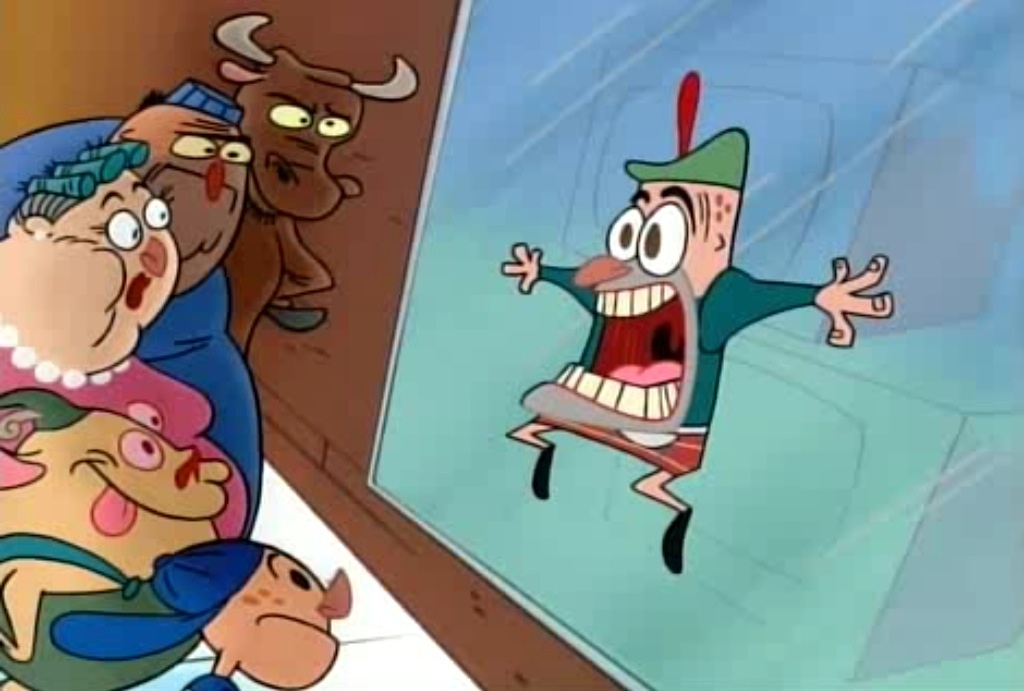
Adult Party Cartoon: A Step Too Far?
In 2003, Ren & Stimpy made a controversial comeback with Ren & Stimpy Adult Party Cartoon, a reboot aimed at an adult audience. Airing on Spike TV, this version abandoned the suggestive subtext of the original in favor of overtly crude, grotesque, and sexually explicit humor. The reboot attempted to push boundaries by featuring unfiltered violence, disturbing character interactions, and exaggerated gross-out gags. Longtime fans were shocked by the drastic shift in tone, as the charm of the original series had always balanced absurdity with clever satire. While some praised the show’s commitment to complete creative freedom, the majority found it excessive, lacking the wit and surreal brilliance that had made the Nickelodeon version such a cult classic.
Despite initial buzz, Ren & Stimpy failed to capture the same magic in its adult reboot, and the reception was overwhelmingly negative. Critics lambasted the series for its gratuitous shock value, with episodes like Onward and Upward featuring disturbing sequences that felt more unsettling than funny. Even Billy West, who had voiced Stimpy in the original series, refused to participate, calling the reboot a mistake. The backlash was swift, and after only three episodes aired, Spike TV pulled the plug on the show, effectively ending its run. Although a few unfinished episodes were later released on DVD, the reboot was largely considered a failure, proving that sometimes, pushing the envelope too far can ruin even the most beloved animated franchises.
Cultural Impact: A Blueprint for the Weird
Despite its relatively short run, Ren & Stimpy reshaped the landscape of animation, proving that cartoons could be more than just simple entertainment for children. Its unapologetic embrace of surrealism, exaggerated character designs, and boundary-pushing humor inspired a new generation of animators. Shows like Beavis and Butt-Head and Cow and Chicken adopted its crude, rebellious spirit, while SpongeBob SquarePants borrowed its absurd humor and grotesque close-ups. The show’s unpredictable pacing and extreme character reactions set a new standard for comedic timing in animation. By refusing to conform to traditional storytelling, it paved the way for experimental and unconventional animated series that followed, influencing both kid-friendly and adult-oriented cartoons for decades to come.
Even modern shows like Rick and Morty owe a debt to Ren & Stimpy, particularly in their use of bizarre, exaggerated expressions and offbeat humor. The series also helped revive the Golden Age animation style, reminiscent of Tex Avery and Bob Clampett, with its dynamic motion and squash-and-stretch character animation. Beyond its artistic influence, the show proved that cartoons could be a cultural phenomenon, gaining a devoted following that extended beyond children. Its success contributed to the rise of animated series with mature themes, leading networks to invest in shows that pushed creative limits. Though controversial, its legacy remains, ensuring its impact on animation will never be forgotten.
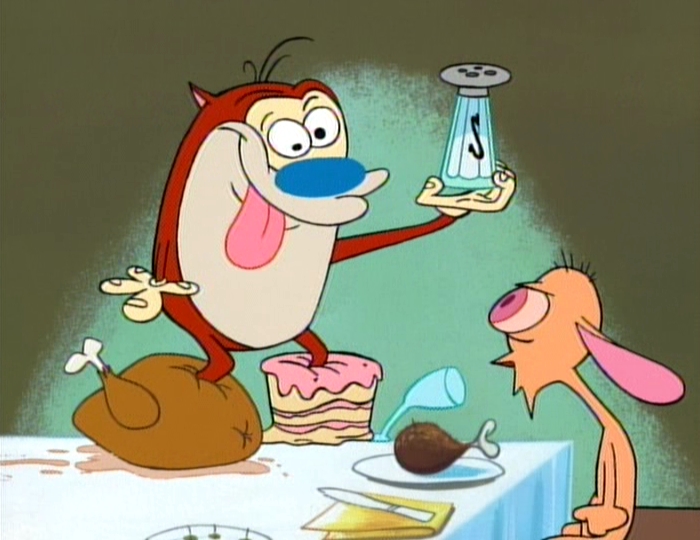
The Revival That Never Was
IIn 2020, Comedy Central attempted to bring Ren & Stimpy back to life, announcing a reboot that would exclude creator John Kricfalusi, who had become a controversial figure due to serious misconduct allegations. The network aimed to reintroduce the show to a modern audience while distancing itself from past controversies. However, unlike previous revivals, which were often criticized for straying too far from the original’s bizarre charm, this project has faced an entirely different challenge—development limbo. Since its initial announcement, updates on the reboot have been sparse, and no concrete details about its production, creative team, or release date have been revealed. This prolonged silence has led many fans to wonder if the project is quietly being abandoned.
While Ren & Stimpy remains a beloved cult classic, its history of failed reboots has left fans hesitant about another revival. The disastrous Adult Party Cartoon in 2003 proved that taking the show to an extreme level of shock value alienated its audience, while later attempts to resurrect it struggled to regain its original spark. Many believe that without the original creative team—or at least a fresh, visionary approach—the series may never recapture the magic that made it a cultural phenomenon. Unless Comedy Central can strike the perfect balance between nostalgia and innovation, this latest reboot may never move beyond its stalled development, leaving Ren & Stimpy as an artifact of a wild, untamed era of animation.
A Legacy of Chaos and Controversy
Few animated series have left a legacy as divisive as Ren & Stimpy, a show that challenged the conventions of television with its grotesque humor, surreal storytelling, and unapologetic boundary-pushing. From its earliest episodes, it stood out as a rebellious force in animation, delighting in crude jokes and shocking imagery while refusing to conform to the wholesome norms of family-friendly cartoons. Its clashes with Nickelodeon executives, numerous censorship battles, and eventual loss of its original creator only added to its mystique. For some, the show was a masterpiece of absurdist humor and artistic innovation; for others, it was an unsettling descent into tasteless shock value. Regardless of opinion, its influence is still felt across the industry today.
Though decades have passed since its original run, Ren & Stimpy remains a topic of discussion among animators, critics, and devoted fans. Its grotesque close-ups, unpredictable storylines, and surreal visual gags continue to inspire modern cartoons, ensuring that its impact endures. While its later attempts at revival—such as the ill-fated Adult Party Cartoon—tarnished its reputation, its early seasons remain a benchmark for irreverent and experimental animation. Even in controversy, the show succeeded in carving out a unique place in television history, proving that animation could be bold, shocking, and unlike anything audiences had seen before. Love it or hate it, its chaotic spirit refuses to be forgotten.
Happy Happy, Joy Joy – Or Nightmare Fuel?
Whether it was celebrated for its surreal humor or criticized for its grotesque excess, Ren & Stimpy was a show that refused to be ignored. Unlike traditional cartoons that followed predictable formulas, it shattered expectations with its absurd storytelling, unsettling imagery, and moments of sheer chaos. Its unpredictability made it both thrilling and unnerving—one episode could be a slapstick comedy, while another might spiral into a disturbing fever dream. This unpredictability was key to its cult status, as fans appreciated the sheer creativity and artistic risks taken by its creators. While mainstream audiences found some of its humor shocking or even repulsive, its devoted fanbase saw it as a brilliant, boundary-pushing experiment in animated storytelling.
Despite the controversies, Ren & Stimpy remains a defining piece of early ‘90s animation, forever linked to an era when cartoons took bold risks. It continues to be referenced in pop culture, influencing later series that dared to embrace the bizarre. While its revivals, particularly Ren & Stimpy Adult Party Cartoon, failed to recapture its original magic, the show’s legacy endures. For better or worse, it proved that animation could be anything—wild, grotesque, hilarious, and even unsettling. Whether remembered for its outrageous humor or its disturbing imagery, it remains a time capsule of creative freedom at its most extreme, cementing its place in animation history.
How useful was this post?
Click on a star to rate it!
Average rating / 5. Vote count:
No votes so far! Be the first to rate this post.
Author
-

Meet Dr. Kendall Gregory, a highly accomplished professional with a remarkable academic background and a deep passion for empowering individuals through knowledge. Dr. Gregory’s educational journey began with a Bachelor of Science degree, followed by a Doctor of Chiropractic Medicine, focusing on diagnosing and treating musculoskeletal conditions. He further expanded his expertise with a Master's degree in Oriental Medicine, specializing in acupuncture and Chinese herbology, and a Master's degree in Health Care Administration, emphasizing his dedication to improving healthcare systems. Dr. Gregory combines his extensive knowledge and practical experience to provide comprehensive and integrative healthcare solutions. Through his writings, he aims to inspire individuals to take charge of their health and make informed decisions.
View all posts
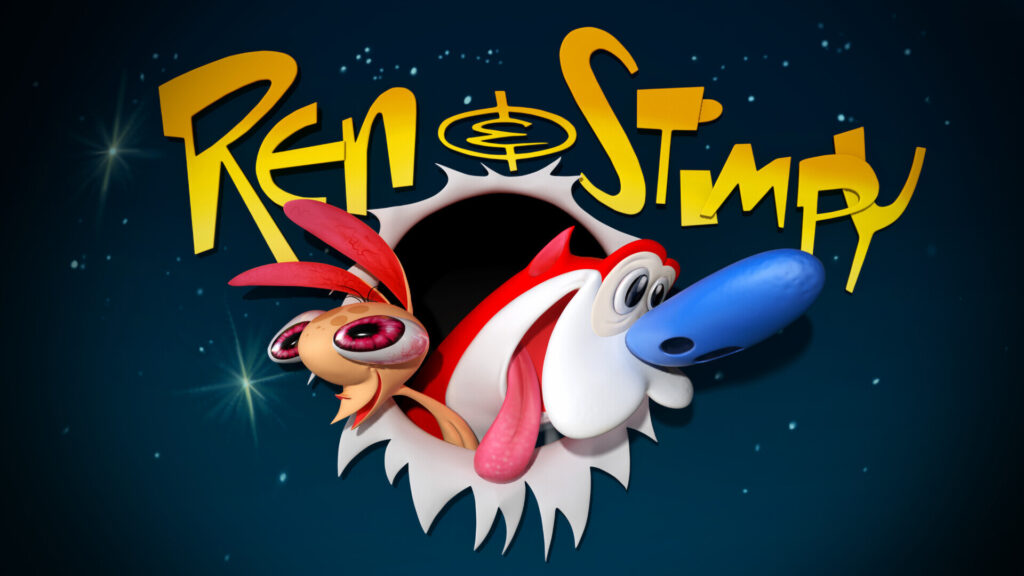
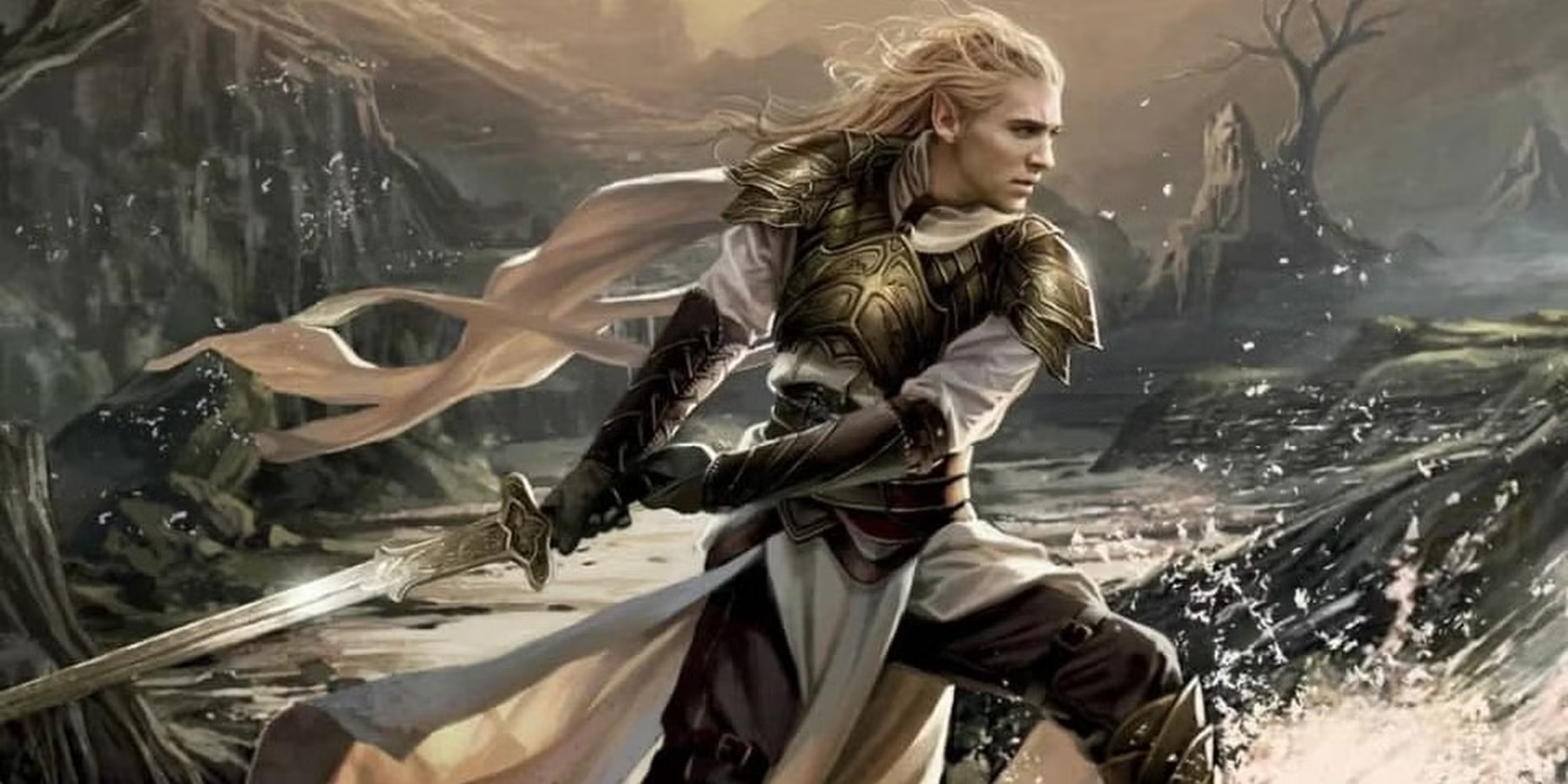





Loved this show 🙂